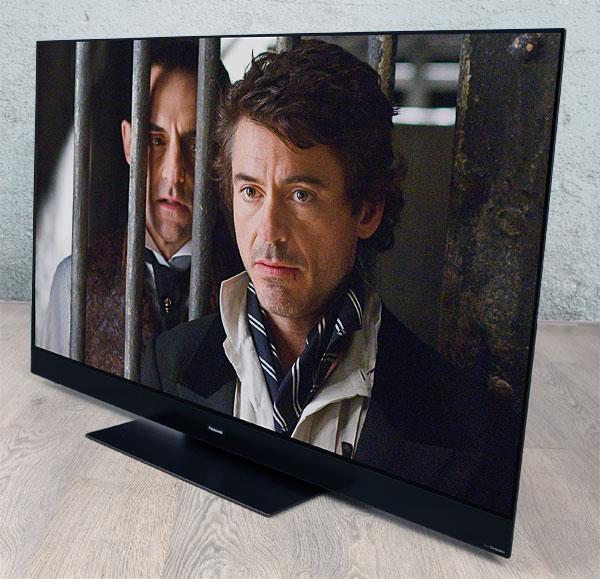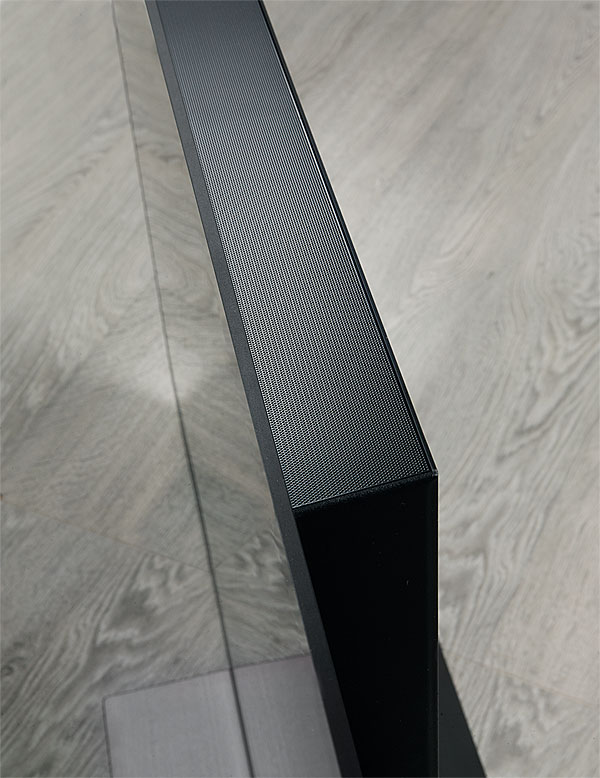Panasonic TX-55HZ2000 OLED TV review

 Panasonic's Professional Edition OLED panel gets an IQ upgrade and the result is dazzling, says Steve May
Panasonic's Professional Edition OLED panel gets an IQ upgrade and the result is dazzling, says Steve May
There's never been a better time to invest in premium home theatre, now that multiplex screens have lost their silvery allure and cinema concessions now come with a side order of anxiety. Stepping up your AV game is the only sensible solution, and Panasonic's flagship HZ2000 is perhaps the ultimate flatscreen upgrade. Okay, it's not 8K, but for the movie sources of the here and now, it's unbeatable.
This first-class flatscreen is the culmination of years of R&D development by the Japanese major that has pushed LG Display's OLED panel technology to a point where performance is nigh-on indistinguishable from a mastering monitor in a Hollywood grading suite. Bolt on a convincing Dolby Atmos sound system, complete with upfiring drivers, and you get a complete package.
Built For Blockbusters
We've hauled the TX-55HZ2000 onto our test bench. This 55-incher is priced at a premium £3,000 – a good chunk more expensive than its same-sized OLED rivals. The TV is also available in 65in guise, for £4,000. Design and build are predictably superb. Like the GZ2000 before it [see HCC #305], the HZ2000 is minimalist and classy. A black micro-bezel blends seamlessly with the forward-facing speaker system that runs beneath, and the screens sits flush on a central, squared pedestal for a rock-solid foundation.

The TV promises a blockbuster film performance, but despite the impressive specification there are caveats. This screen doesn't tick every box, and for some it's definitely not going to hit the spot.
As with other Panasonic OLED offerings, it boasts universal HDR compatibility, so as well as Dolby Vision support, there's HDR10+, plus regular HDR10 and broadcast HLG. It's also Dolby Vision IQ enabled. This updated iteration takes advantage of the light sensor built into the TV to assess room lighting levels, enabling it to automatically adjust and optimise pictures accordingly. Such optimisation is also present, under the moniker Intelligent Sensing, with Filmmaker Mode, the standardised cinema preset devised by the UHD Alliance. Much like Dolby Vision IQ, Panasonic's Intelligent Sensing reacts to ambient light, aiming to make the Filmmaker Mode setting better suited to viewing conditions.
The TV comes with four HDMI inputs, one of which supports eARC. All can handle 4K 60fps sources, but there's no support for 4K 120fps, the video output promised by PlayStation 5 and Xbox Series X consoles.
Admittedly, it's not yet clear just how much support there will be for high-frame-rate gaming. I'd imagine the standard output for PS5 and Xbox Series X titles will actually be 4K 60fps. But to not even have the option of 120fps will be enough to dissuade game-centric buyers from shortlisting this set. There's no Variable Refresh Rate support either, but you do get Auto Low Latency Mode functionality.
And it's not game over entirely for the HZ2000. With Game mode engaged, input lag measures 21.8ms, which is a reasonable (if not best-in-class) performance.
As you might expect, the smart platform employed here is Panasonic's My Home Screen, now in its fifth iteration. This actually takes a different approach to Samsung's Tizen, LG's WebOS and the Android TV OS favoured by Sony and Philips. There's no app-laden bar to browse, or Android's fullscreen rails to explore. Instead it offers a customisable user experience that won't frighten technophobes. Panasonic has given My Home Screen something of a refresh this year, downsizing its onscreen shortcut buttons, and popping them bottom left rather than central, but operation remains straightforward. The onboard Freeview Play tuner means catch-up TV choice is extensive – all the mainstream players are here, including BBC iPlayer, All 4, ITV Hub, My5, and UKTV Play. The choice of subscription streaming apps includes Netflix, Amazon Prime Video, Rakuten, YouTube, Britbox and Chili, but there's no Disney Plus (Panasonic really should sort that out). The TV also works with Google Assistant and Amazon Alexa connected devices.
Master Oled = Master Of Movies
When it comes to picture performance, the 55HZ2000 knocks the ball out of the park.
Panasonic's endeavours to squeeze every ounce of performance from standard OLED panel technology pay dividends. This 'Professional Edition' Master OLED display adopts heat management techniques devised for plasma screens to manage dissipation, which in turn, says Panasonic, has allowed its engineers to push the average picture level (APL) up by as much as 30 per cent. Just to be clear, this doesn't mean an exaggerated level of HDR brightness, but it does translate to slightly brighter OLED imagery overall, with excellent colour accuracy. There's no unforced zing in its visuals. Landscapes, VFX and skin tones all look plumped, rather than flat.
While you won't see an obvious difference between the picture quality on this year's HZ2000 compared to the previous GZ2000, there are differences in performance where content is impacted by Dolby Vision IQ and Filmmaker Mode.
The key is the aforementioned ambient light control, which enhances HDR images by making subtle differences in low-level shadow detail more visible without boosting brightness.
HDR grading on The Witcher (Netflix) often makes darker sequences look foggy, but with Dolby Vision IQ the action is more clearly defined, without impacting the visual aesthetic of the show. Detail also gets a lift courtesy of Panasonic's HCX Pro image processor. Refining an already accomplished image engine, this does a remarkable job upscaling regular HD as well as maximising native 4K. Streaming HD and regular Blu-rays enjoy a little more visual snap. Colour rendition is superb, with subtle gradations.
Meanwhile, native 4K presentations are exemplary. 4K SDR, as seen routinely on pay TV services, benefits from the high APL Panasonic has engineered, while the wide contrast aids the sense of image depth.
The 55HZ2000's HDR performance sits in the upper echelons of OLED displays. I measured HDR peak brightness at more than 900 nits, which is enough to showcase atmospheric lighting and allow specular reflections and pin-point light sources to glint with intensity.
 |
Home Cinema Choice #351 is on sale now, featuring: Samsung S95D flagship OLED TV; Ascendo loudspeakers; Pioneer VSA-LX805 AV receiver; UST projector roundup; 2024’s summer movies; Conan 4K; and more
|

















































